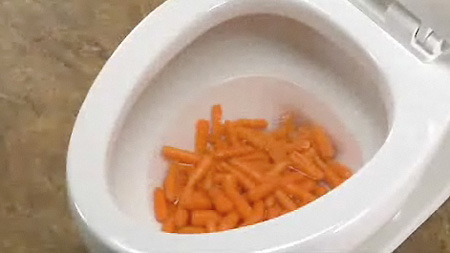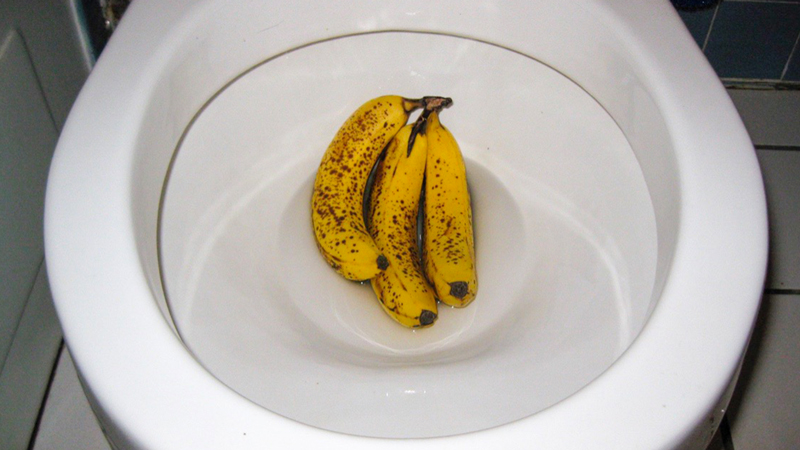Can You to Flush Food in the Toilet?
Can You to Flush Food in the Toilet?
Blog Article
Do you find yourself on the lookout for help and advice on What Can Happen If You Flush Food Down the Toilet??

Intro
Many individuals are typically confronted with the problem of what to do with food waste, particularly when it concerns leftovers or scraps. One typical question that arises is whether it's okay to purge food down the bathroom. In this article, we'll look into the reasons that people could think about flushing food, the effects of doing so, and alternative techniques for proper disposal.
Reasons people might take into consideration flushing food
Lack of recognition
Some people may not recognize the potential damage brought on by purging food down the commode. They might incorrectly believe that it's a safe practice.
Benefit
Flushing food down the commode might seem like a fast and simple remedy to throwing away unwanted scraps, especially when there's no nearby garbage can offered.
Laziness
In some cases, people might simply pick to flush food out of sheer negligence, without considering the effects of their activities.
Repercussions of flushing food down the bathroom
Environmental impact
Food waste that winds up in waterways can contribute to pollution and harm marine environments. In addition, the water used to flush food can stress water resources.
Plumbing problems
Flushing food can result in clogged up pipes and drains, triggering costly pipes repair work and aggravations.
Types of food that must not be flushed
Coarse foods
Foods with fibrous structures such as celery or corn husks can get entangled in pipes and cause clogs.
Starchy foods
Starchy foods like pasta and rice can soak up water and swell, leading to blockages in pipelines.
Oils and fats
Greasy foods like bacon or food preparation oils must never be purged down the bathroom as they can strengthen and trigger clogs.
Proper disposal techniques for food waste
Using a waste disposal unit
For homes furnished with waste disposal unit, food scraps can be ground up and purged via the pipes system. Nonetheless, not all foods appropriate for disposal in this manner.
Recycling
Specific food product packaging materials can be recycled, lowering waste and reducing environmental influence.
Composting
Composting is an environmentally friendly way to throw away food waste. Organic products can be composted and made use of to enhance soil for horticulture.
The importance of appropriate waste administration
Minimizing environmental injury
Appropriate waste monitoring methods, such as composting and recycling, aid lessen contamination and protect natural deposits for future generations.
Shielding pipes systems
By avoiding the method of flushing food down the bathroom, home owners can stop pricey pipes repair work and preserve the stability of their plumbing systems.
Final thought
To conclude, while it may be appealing to purge food down the toilet for ease, it is necessary to recognize the prospective consequences of this activity. By adopting proper waste administration methods and taking care of food waste responsibly, people can add to much healthier plumbing systems and a cleaner atmosphere for all.
FLUSH FOOD DOWN THE TOILET?
FLUSHING FOOD CAN CAUSE BLOCKED DRAINS IN YOUR HOME
All of the plumbing fixtures in your home are connected to the same sewer pipe outside of your home. This outdoor sewer pipe is responsible for transporting all the wastewater from your home to the Council sewer mains. Even small pieces of food that go down the kitchen sink can cause problems for your sewer. It should therefore be obvious that flushing larger bits of food, such as meat, risks a clog in either the toilet itself or the sewer pipes. Flushing greasy food is even more problematic because oil coagulates when it cools, coating the interior lining of your pipes.
THE TOILET IS NOT A BIN
Food isn’t the only thing that people shouldn’t be flushing down the toilet. People use the toilet to dispose of all kinds of things such as tampons, makeup wipes, dental floss, kitty litter and even underwear. Water goes to great lengths to educate residents about the high costs and stress placed on wastewater treatment systems simply from people flushing the wrong stuff down the toilet. It costs taxpayers millions of dollars each year, and homeowners thousands in blocked drain repairs.
FLUSHING FOOD IS A WASTE OF WATER
Flushing food is a waste of our most precious resource - water. In June this year Level 1 water restrictions were introduced to protect water supply from drought conditions. Much of New South Wales continues to be affected by prolonged drought with recent figures revealing up to 97 per cent of the state remains in drought. Depending on whether you have a single or dual flush toilet, every single flush uses between five and 11 litres of water. In the current climate this is a huge amount of water to be wasting on flushing food that should be placed in the bin (or better yet, the compost).
https://www.jabplumbingsolutions.com.au/blog/can-you-flush-food-down-the-toilet

Do you like more info about Think Twice Before Flushing Food Down Your Toilet? Post a short review below. We will be happy to listen to your reactions about this content. We hope that you visit us again in the future. Sharing is caring. Helping people is fun. Many thanks for your time. Come back soon.
Visit My Website Report this page